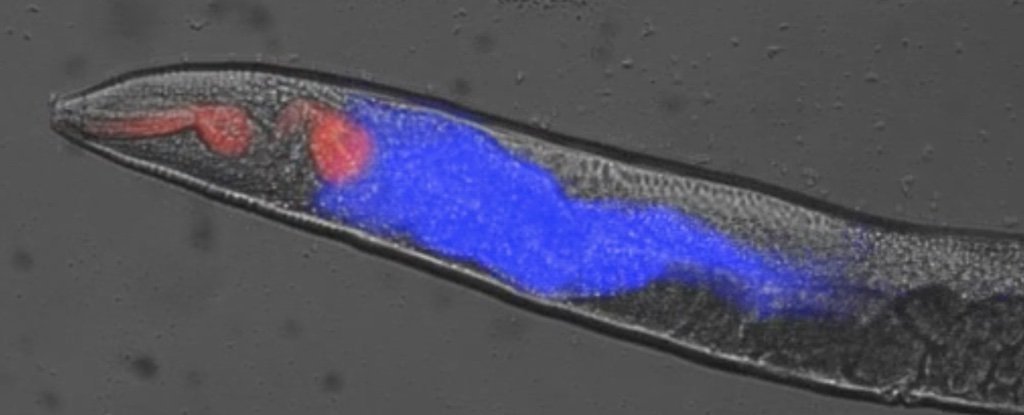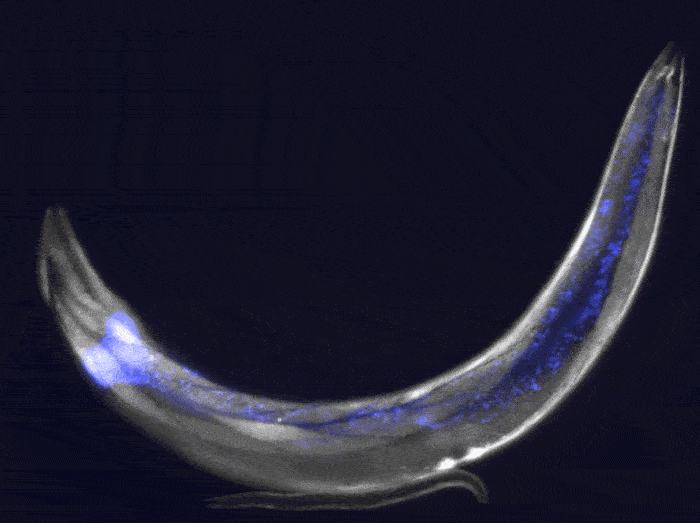The study of the death of worms allows you to understand the mechanism of the onset of death of the organism

Death is irreversible, everything is subject to it, with the exception of some simple organisms. But what is it and what are the mechanisms of cell death, tissue, the whole body?
For the first time, scientists were able to observe the onset of death in transparent worms of the species Caenorhabditis elegans , whose body is very simple. The process, which scientists have observed, makes it possible to clarify some details of the dying of people. However, in worms of this species, the process of dying differs from similar processes of other living organisms.
Why? The stiffness of worms occurs before death, and not after it. “We are very surprised there that the numbness of the worms occurs before the animal dies. And on this basis it can be understood that the worm's organism is about to die. In complex animals and humans, death occurs due to cessation of blood circulation. The heart stops beating, blood is not pumped through the vessels, the brain and other organs die.
')
But worms like C. Elegans are different. They have no circulatory or respiratory system. In 2013, the same team of researchers studied the process of dying that takes place in the body of the nematode, another worm whose body is transparent. Then the scientists managed to get an image of a “flash of blue fluorescent light” passing through the body at the time of the death of the cells.
At this time, scientists have tried to delve into the situation, having studied it in detail. C. Elegans also has fluorescence at the time of cell death. In addition, at the same time the muscles become numb - and even before the worm dies completely. The worm's body at this time may still move, as if nothing is happening.
The problem is caused by calcium ions. When death "spreads" through the body, that is, the cells die en masse, they throw out a special chemical compound. That it causes the appearance of fluorescence, which was observed by scientists. This substance is anthranilic acid.
“This luminescence and numbness are the result of mass cell death. It continues until the body dies completely, ” members of the research team explain .

It is clear that the study itself is interesting. But even more relevant for modern science, it becomes in terms of studying the death of higher animals, as well as man. What is death? Are the processes occurring in the organism of highly organized animals reversible at the time of their death? The answers to these questions, without any doubt, are vital for a person - because now many scientists are studying the possibility of extending a person’s life or making it immortal altogether.
So, in humans, all this is associated with ATP (adenosine triphosphoric acid). This is a universal carrier of energy in almost all highly organized organisms. At the time of death, ATP production ceases and the body dies due to energy starvation. At the same time, calcium is released, which leads (somewhat later) to the numbness of tissues. These processes are known, but it is not entirely clear how, when and why ATP production ceases, and whether this process is reversible.
In the study of nematodes, scientists analyzed, among other vital signs, the concentration of ATP. So, it remains unchanged almost until the moment of the death of the worm. A few moments before death, the ATP level drops dramatically. According to the scientists who carry out this study, the study of worms, and possibly more complex organisms, will make it possible to understand whether we are able to reverse or at least suspend the processes that lead to death.
But before you have to spend a lot of experiments with C. Elegans. Their organisms are fairly simple, so over time, scientists will be able to understand exactly what is happening and why. Also, experts will try to modify the body of worms in such a way as to prolong their life, slowing down the processes that lead to death.
So far this is not possible, because “the wave of death spreads from cell to cell, calcium is released. All this is like a fire, when fire spreads to nearby objects, everything burns, and in the end the house burns to the ground and falls. ” This is how the experts who studied C. Elegans explained the dying process of the worm.
The results of this study are published in the authoritative scientific journal Cell Reports .
Source: https://habr.com/ru/post/410889/
All Articles